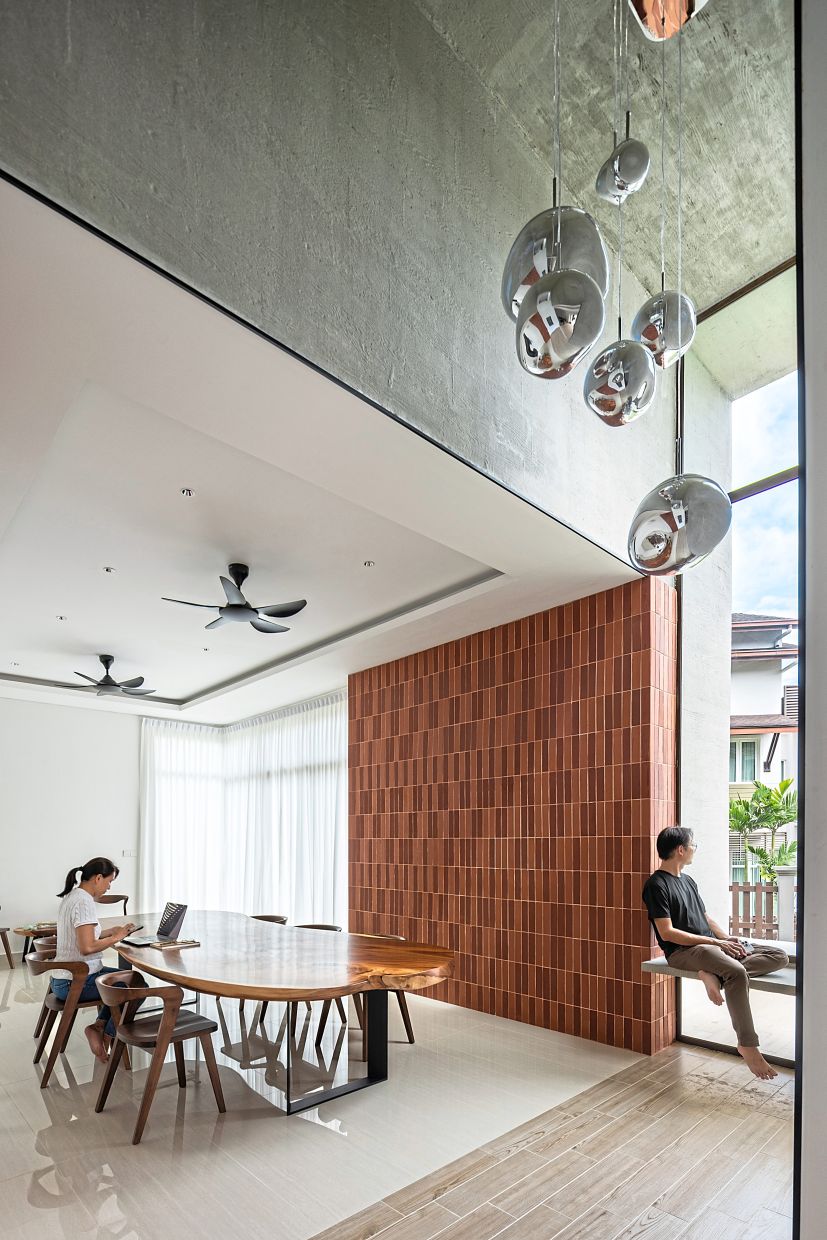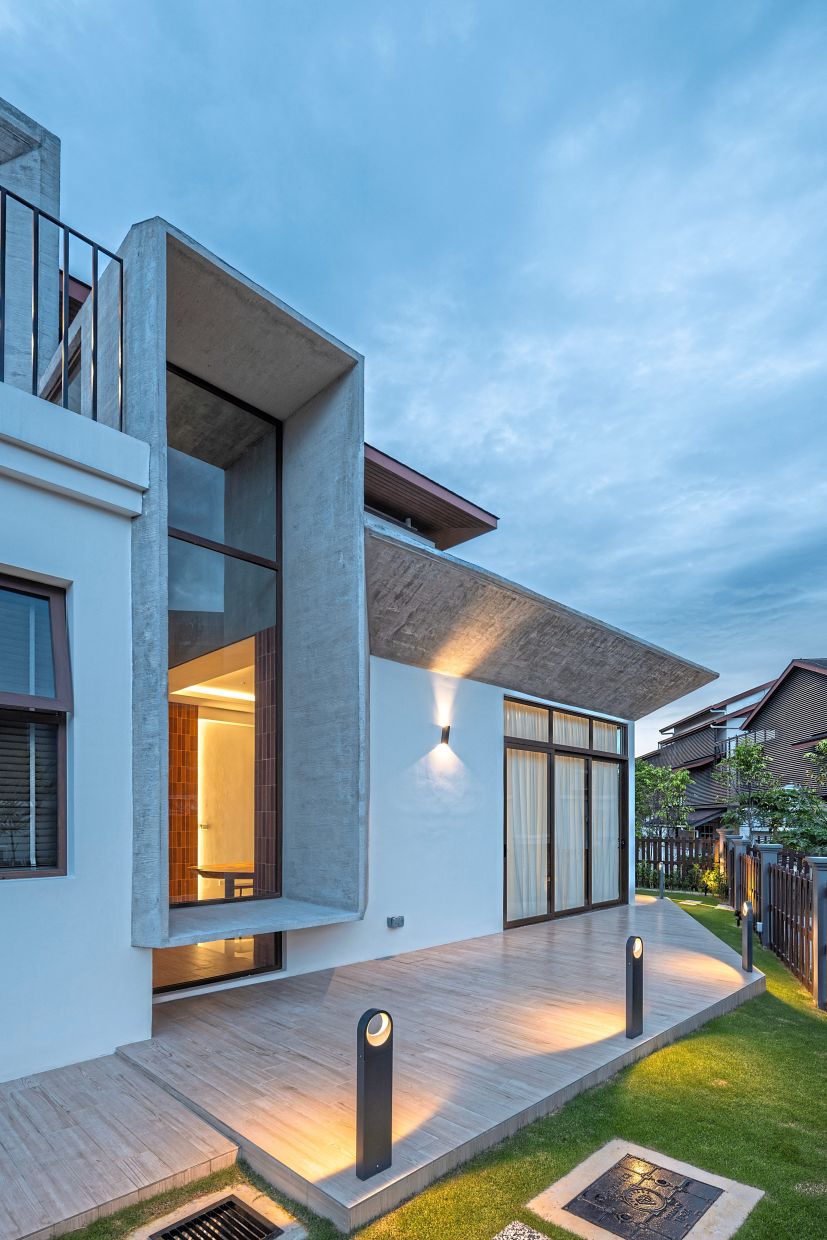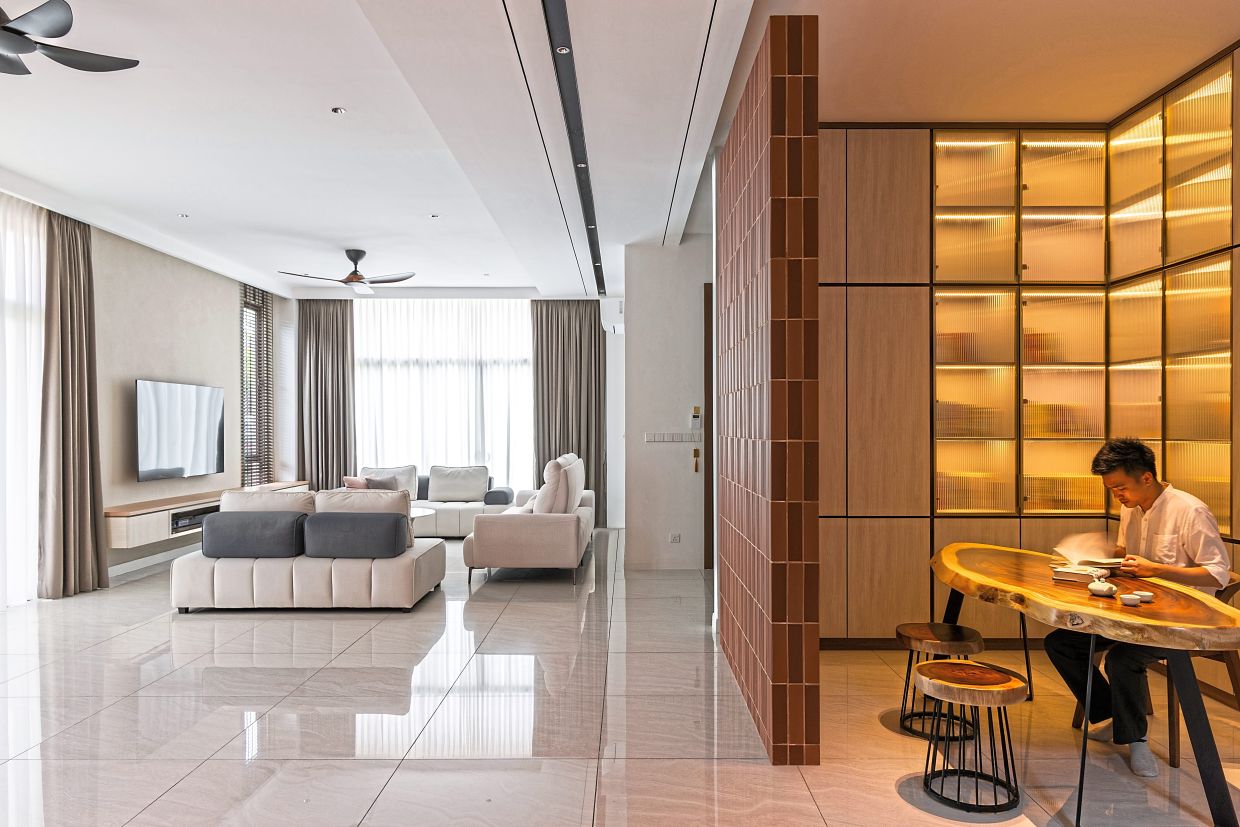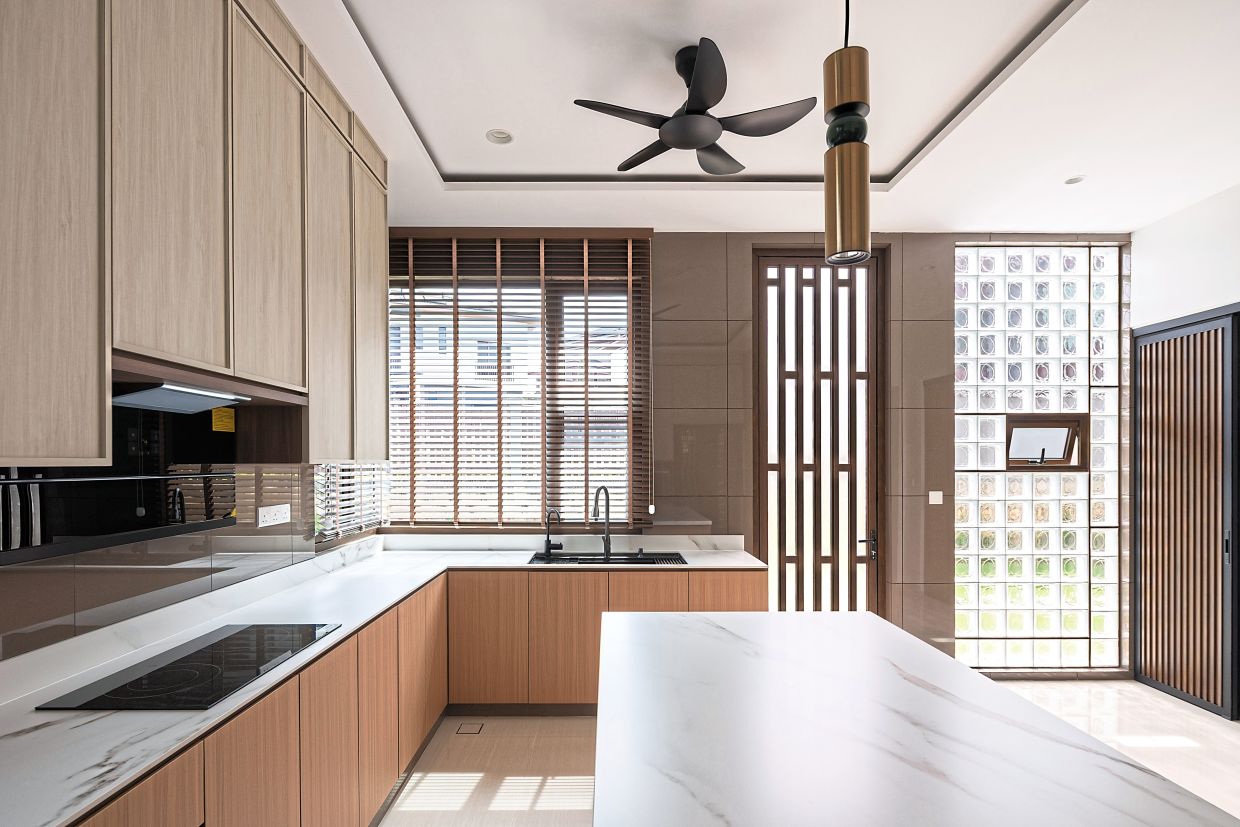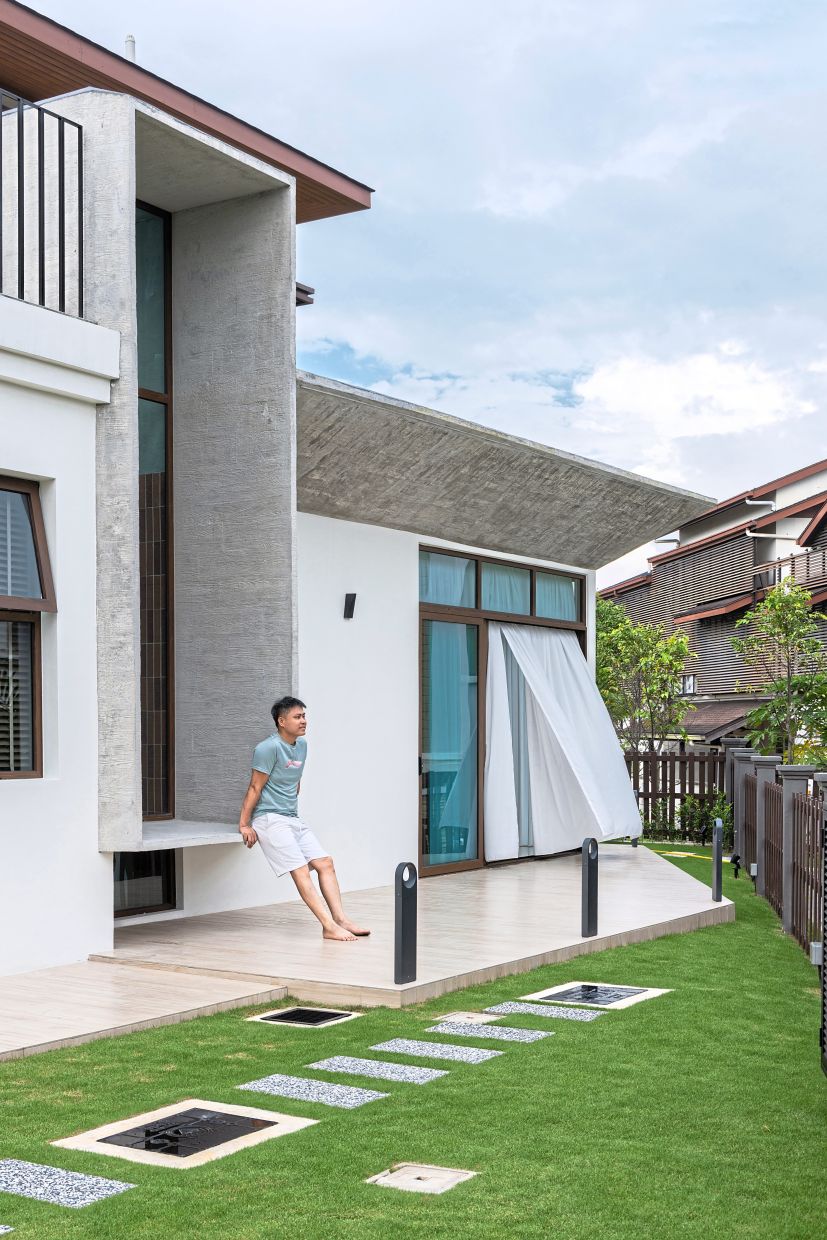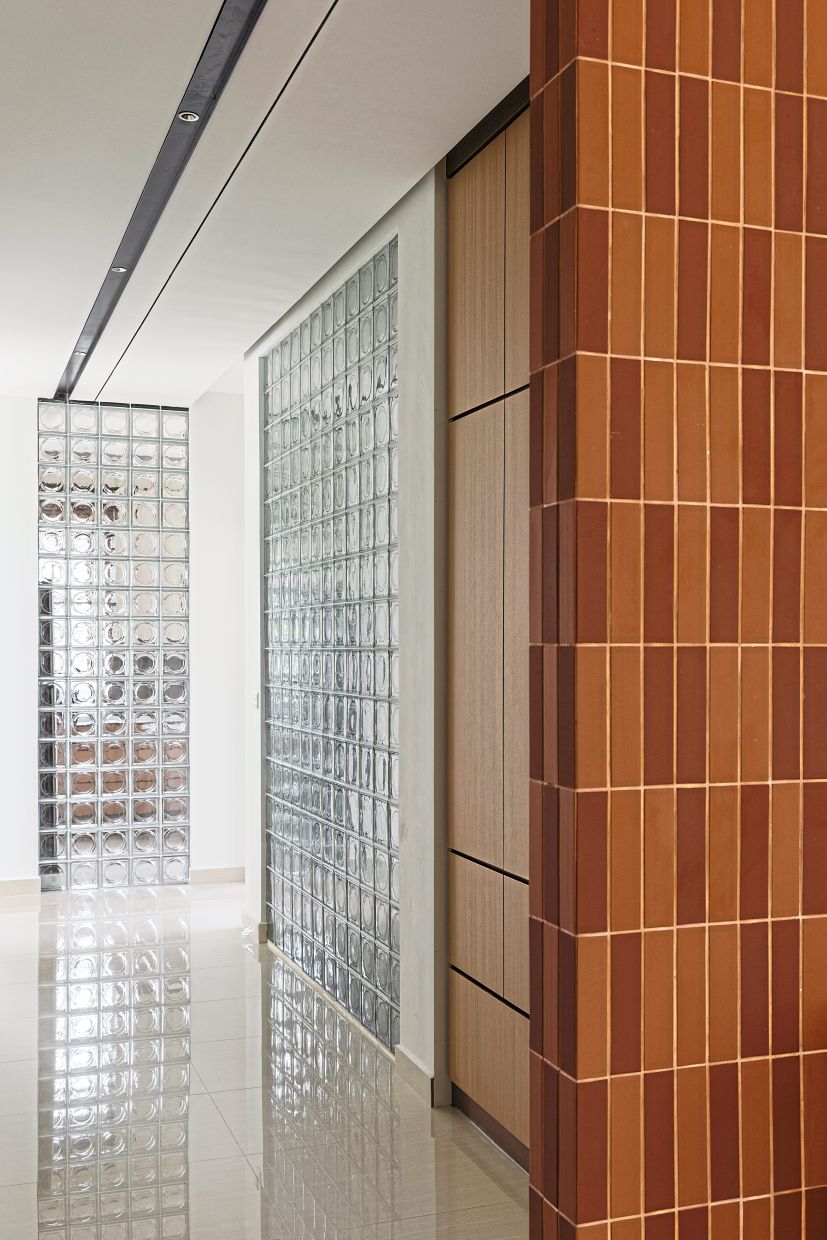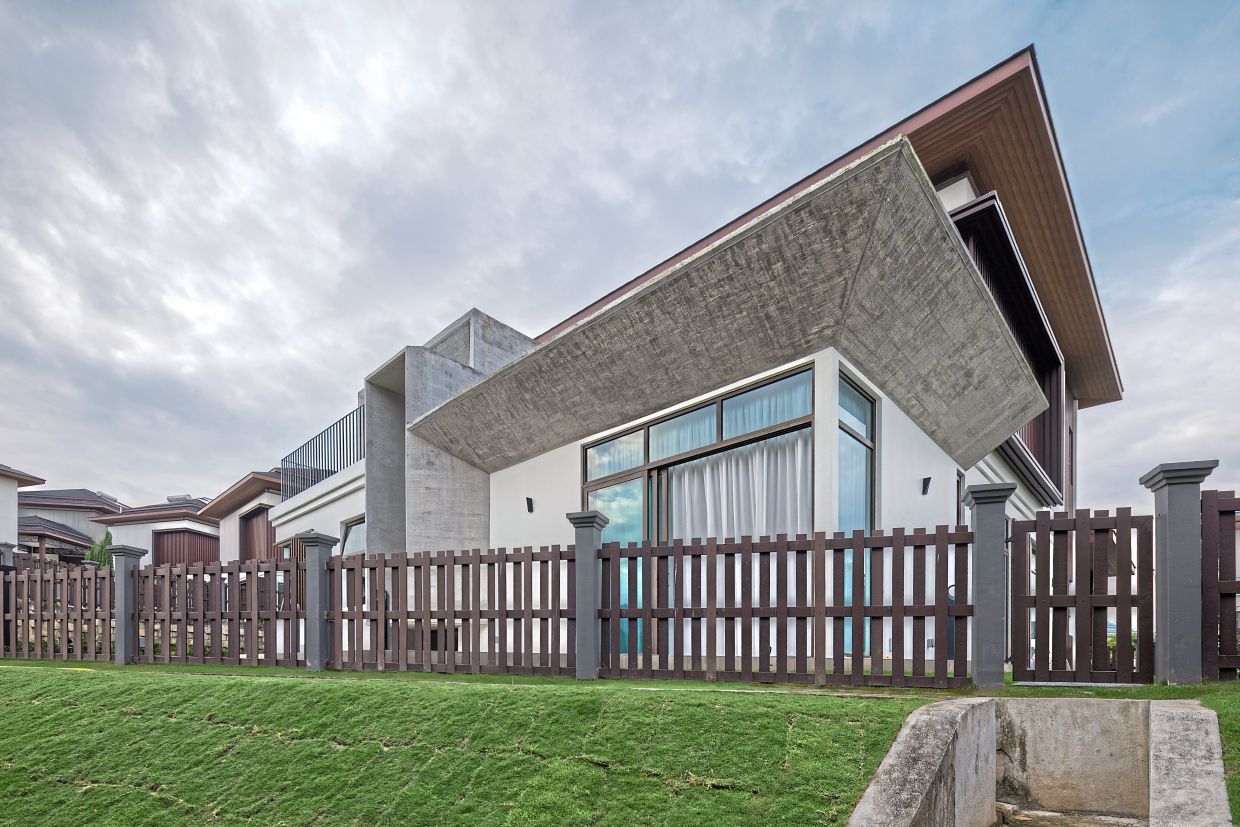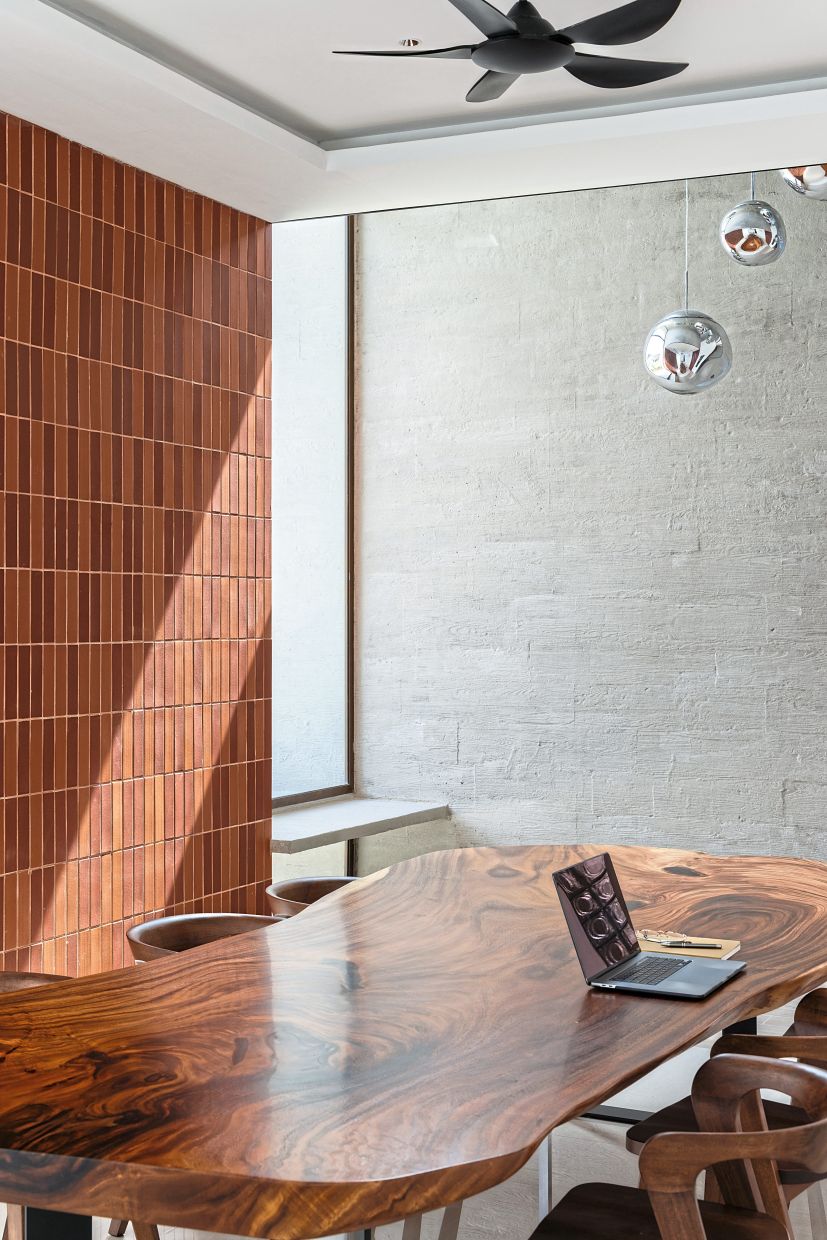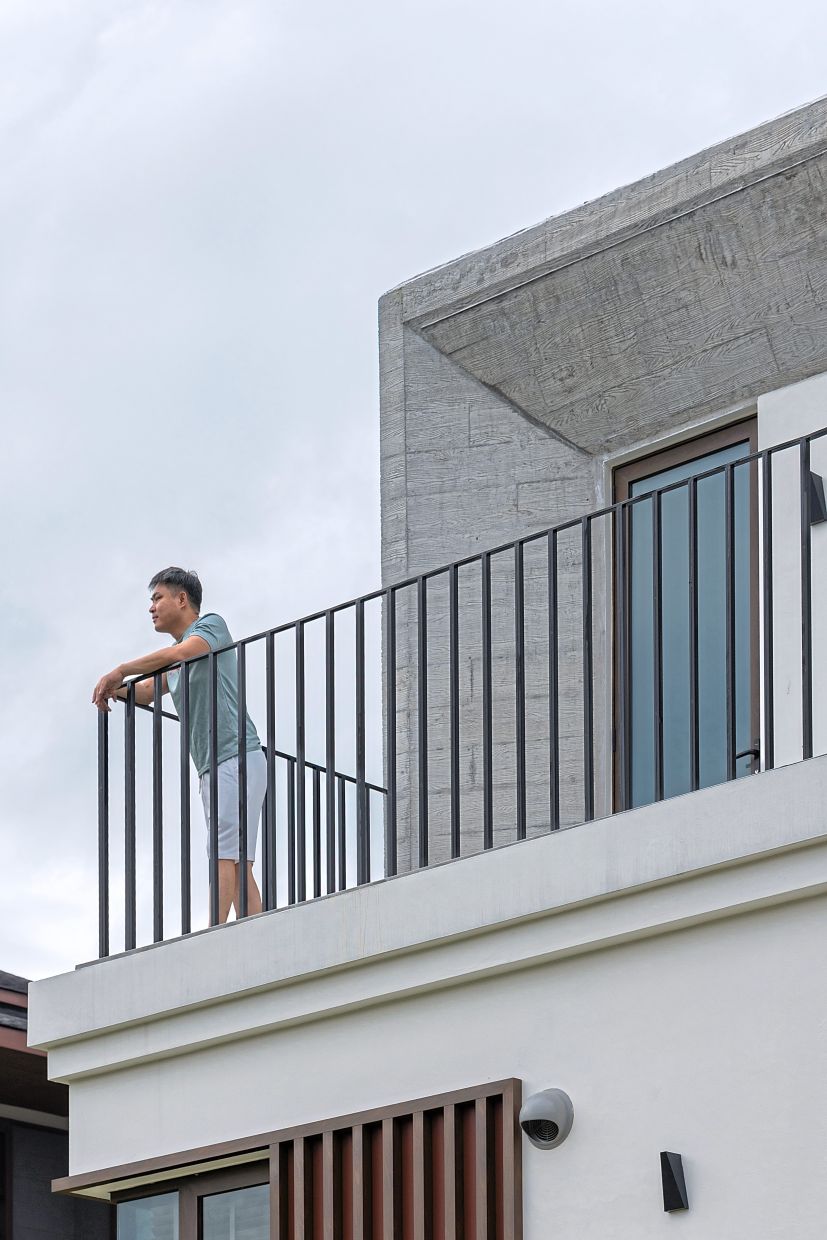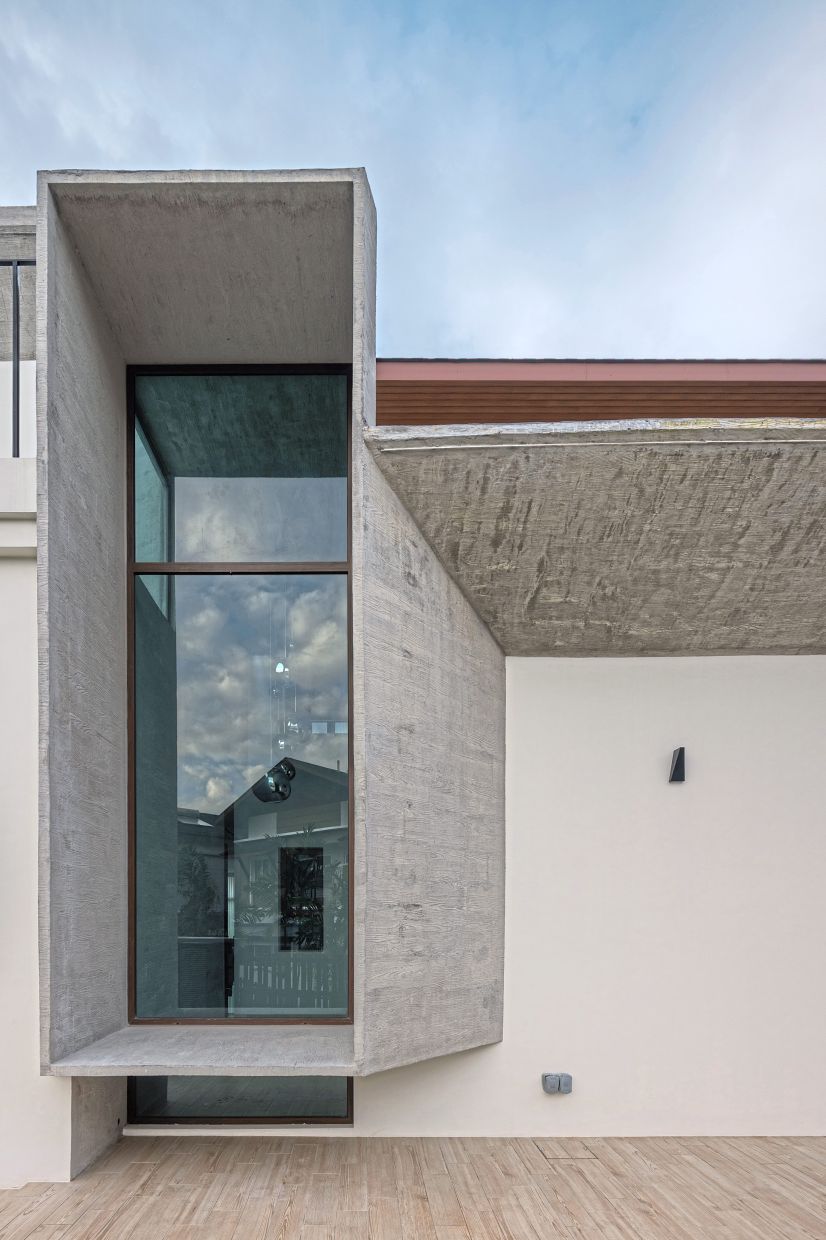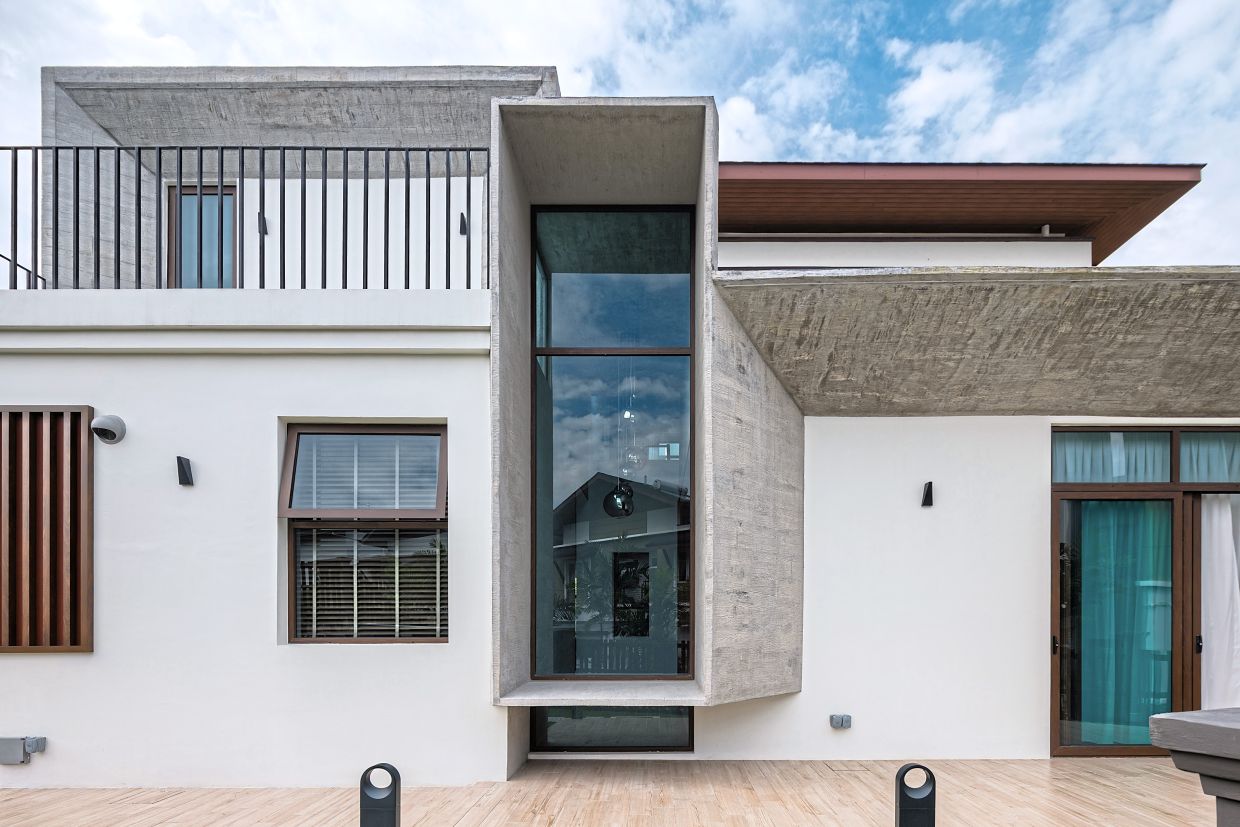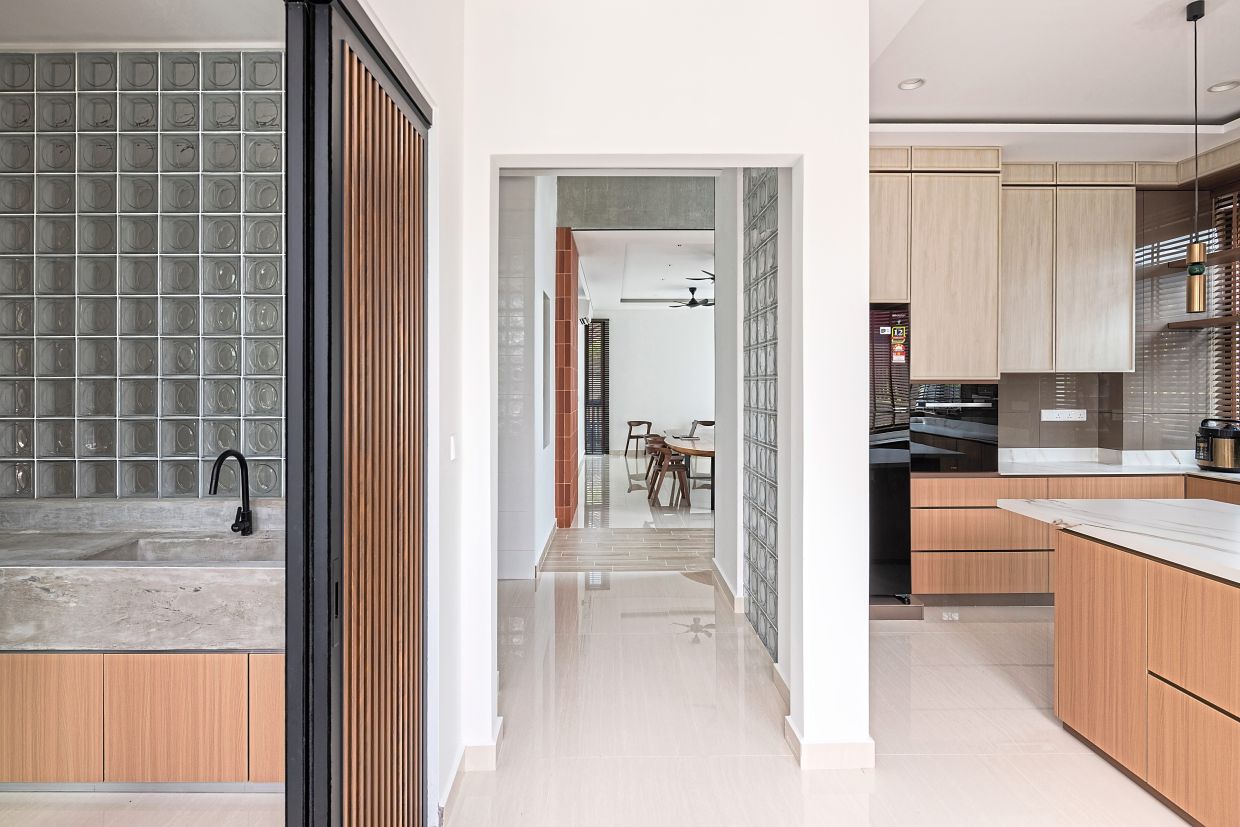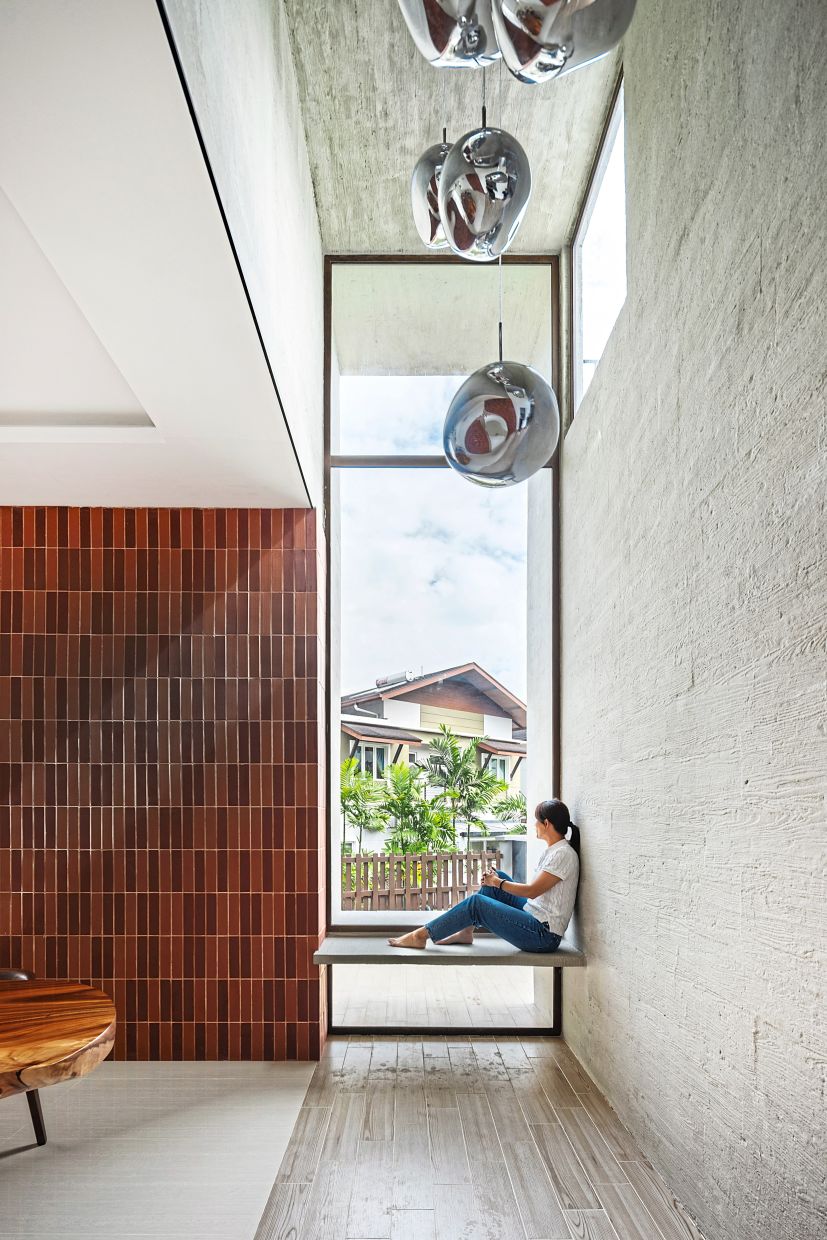View from the existing downslope, capturing the elegance chamfered profile of concrete. Photos: Pixelaw Photography/Kee Yen Architect
For architect Lim Kee Yen, inspiration comes from everyday sensitivities of life, such as light, shadow, movement, memory and nature.
He believes homes should reflect both the tangible and intangible aspects of living, and they should create spaces that evoke emotions as much as provide function.
His passion for architecture has evolved since starting his own firm, Kee Yen Architect, in 2017.
Lim says over the years, he has grown more attuned to the subtleties of space – the unseen qualities that affect how people feel in their homes.
“What drives me today is the pursuit of meaning in architecture: creating designs that are not just functional but also deliver emotional and symbolic experiences,” he adds.
Before embarking on any new home project, Lim always starts by listening – to the client, to the site and to the atmosphere of its surroundings.
“I take time to sense the subtleties of space and context before translating them into a narrative. The design emerges through a dialogue between human needs and the character of the site,” says Lim.
And that’s precisely what he did with the Concrete Ribbon House, which was completed this year.
The homeowner’s brief to Lim was to create a modern home that was distinct yet comfortable.
Through numerous dialogues and iterations, his initial design proposal of something sculptural yet liveable has evolved into a house that not only met the homeowner’s practical needs but also became a piece of architecture that tells a great story.
At first glance, Lim found the original space to be ordinary: a typical stratified house plan without dramatic natural features.
“My vision was to reinterpret the rear of a typical suburban home into something more expressive and connected to its surroundings. Instead of merely extending the house by adding mass, I wanted the new portion to feel fluid and continuous as a gesture that unites the old and new through form, texture and light,” says Lim.
A spatial fluidity
The idea of the “ribbon” came from the concept of flowing movement. The board-formed concrete folds, wraps and bends itself across walls and ceilings, creating both structure and space while softening the meeting point between the existing house and its extension.
While concrete is often perceived as hard and rigid, Lim was able to turn it into a sculptural, almost fabric-like element, grounding the house yet allowing it to breathe and engage gently with the garden.
Needless to say, the renovation process was both exciting and challenging.
Working within the constraints of the existing structure required precision and discipline, yet it also allowed Lim to be inventive.
He says: “It was about respecting what was already there while realising its potential in something entirely new; the continuous ribbon of board-formed concrete acts as both a unifying architectural element and a tool for spatial fluidity, seamlessly integrating interior and exterior spaces.”
The transformative use of this industrial material, reimagined as a continuous, flowing ribbon that envelops the home, makes it the heart of the project.
No longer rigid and static, this concrete ribbon moves with intent, cascading from room edges to wrapping facades and seamlessly extending into walls, benches and apertures.
It dissolves the conventional boundary between interior and exterior, allowing space to unfold organically.
Each board imprint left on its textured surface carries a memory of its making, creating a tactile depth that responds to shifting light and shadow throughout the day.
This architectural ribbon is more than just an expressive gesture; it is a tool for dimensional adaptability, says Lim.
Concrete, in its softened yet structured state, defines not just form but atmosphere, embracing both the ephemeral and the permanent.
Stepping inside the home, one will be able to discover terracotta panels that introduce another layer of materiality, acting as dividers that subtly direct circulation while reinforcing openness.
Its earthy warmth contrasts with the raw elegance of concrete, grounding the interior with a richness that deepens over time.
Meanwhile, a glass block wall acts as a translucent veil that invites diffused natural light to flood the space. Says Lim: “It provides privacy without severing the home’s connection to the outdoors, fostering a delicate interplay of luminosity, shadow and enclosure.”
Engineering the curves
As with any design as ambitious as the Concrete Ribbon House, the project was not without its own difficulties.
“The biggest one was convincing the owner to embrace the natural imperfections of materials, whether it was the rough texture of board-formed concrete in its bare tone, or the uneven warmth of mixed terracotta tiles,” shares Lim.
These so-called imperfections are what gave the house its authenticity and soul in the end.
Lim is quick to share that his favourite part of the home is the sculptural concrete facade framing the double-volume space.
“It feels like a living form embracing the house. For the homeowner, the newly extended dining area, where family and guests gather, is the most used. It embodies the openness and flow that the design sets out to achieve,” he says.
And that, in his opinion, is what makes a good home design – when it resonates emotionally with its inhabitants.
“It should feel natural and intuitive, yet still surprise them with moments of beauty. It’s not about size or luxury, but about how well the house supports a meaningful life.
“I don’t believe there is such a thing as a perfect home, at least not in the universal sense. A home should be deeply personal, shaped by the lives, memories and emotions of its inhabitants.”
What feels “perfect” to one person might feel foreign to another, Lim says.
“To me, a good home is not about achieving flawlessness, but about authenticity, a place that grows and evolves with its occupants, embracing their imperfections, rhythm and dreams.
“And in that way, a home becomes a true reflection of life itself,” he concludes.


